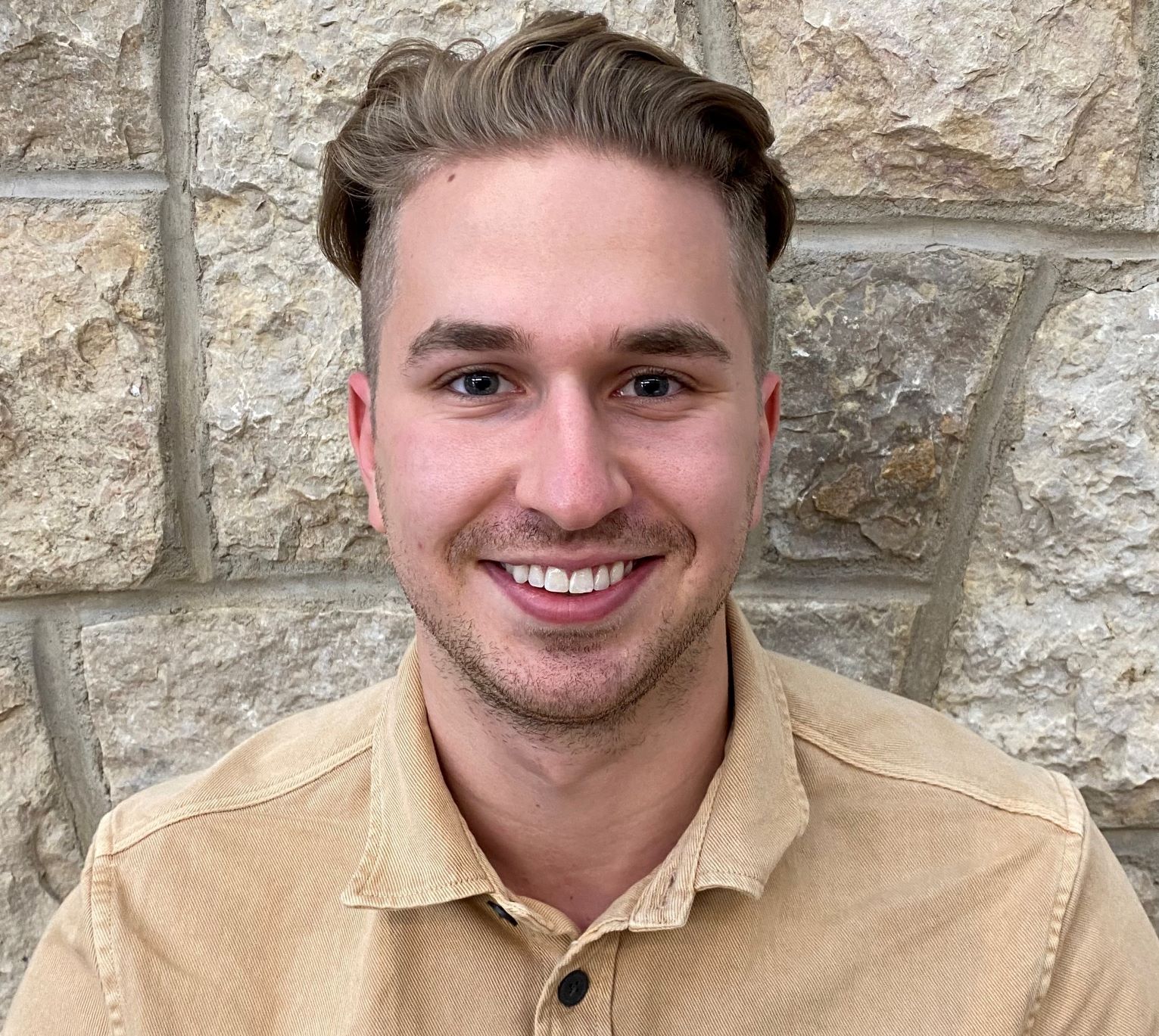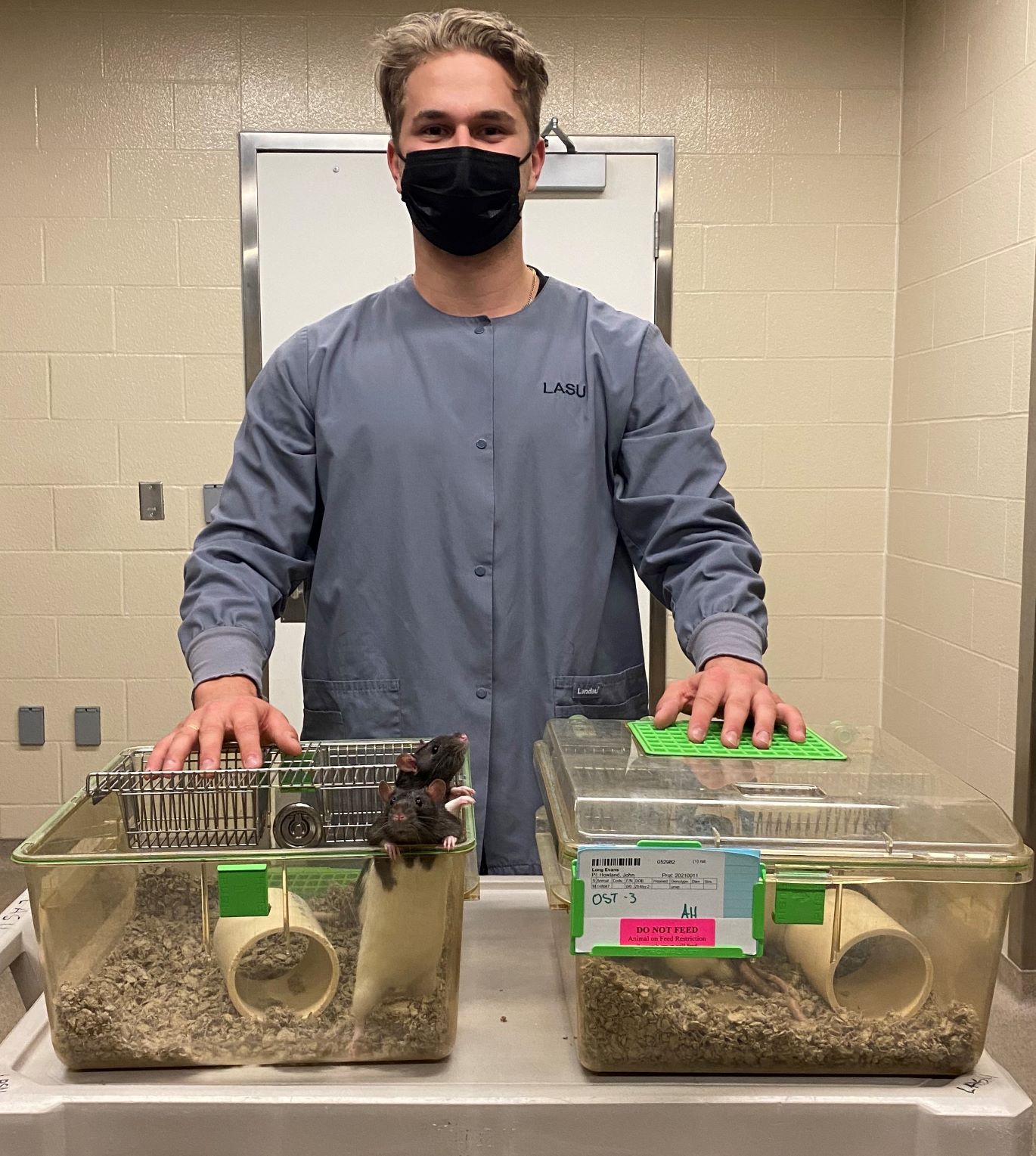
The Lab Rat: Ashton Heidt
Ashton Heidt is currently in fourth year of a BSc (Honours) degree from the College of Arts and Science, majoring in physiology and pharmacology. His research project (with the guidance of Dr. John Howland) investigates how chemical inactivation of a particular brain region will alter performance in working memory tasks for rats.
By Alexa SaleskiExploring All The Possibilities
As a passionate physiology and pharmacology student, Ashton Heidt is always looking for the next opportunity to expand his learning and challenge himself academically. Taking on an honors project fit that passionate need for challenge.
“My current research focus has been within behavioral neuroscience. I am a small part of a highly sophisticated and collaborative team in Dr. John Howland’s lab that utilizes state-of-the-art techniques to monitor behavioral changes in rats in response to manipulations that we make to the rat’s brain.”
“My current work is a project that I am leading alongside my two fellow honors student colleagues (Faith Austin-Scott and Spencer Orvold). We are looking at how chemical inactivation of a particular brain region (nucleus accumbens) will alter performance in a working memory task for rats.”
There are changes coming in neuroscience research, Ashton noted. “Currently, we are executing the experiment exclusively with male rats. However, we plan on implementing part two of the experiment where we will utilize female rats. This is particularly exciting for me as it will be a step in pushing our lab to be part of a very limited group of researchers that use female rats in certain behavior testing. Historically, female rats have been predominantly ignored due to the biological influence of their rapidly fluctuating estrous cycle. A shift in science is on the horizon where females will hopefully be used far more in rodent research, and our lab hopes to be one of the leaders in this very important area.”

Ashton Heidt, lab rat working with lab rats. Photo by Alexa Saleski.
Learning with Others
Ashton attributes his passion for research and love for the lab atmosphere to the many great colleagues he gets to work alongside.
“Through my first summer of research, I had the pleasure of assisting several brilliant graduate students in their research projects. One of these projects captained by Ph.D. student Tallan Black is looking at behavioral changes in offspring of rats chronically exposed to high THC and high CBD cannabis smoke. The importance of this project cannot be understated due to the recent legalization of cannabis in Canada, and the increasing potency for humans exposed to cannabis in pregnancy. Another project I have been able to support is Ph.D. student Dan McElroy’s, where he is utilizing EEG recording of two distinct brain areas to understand how these areas are involved in working memory tasks. Lastly, I have assisted MSc student Ilne Barnard in her pursuit of understanding how certain drugs may influence the rat’s natural tendency to seek novel stimuli.”
The work going on in Dr. Howland’s lab will make a difference in how society understands drugs, interventions, and risk.
Finding the Next Opportunity – Research is not a Trap
Ashton’s research journey is a testament to the importance of reaching out, taking a chance, and networking with professors.
“I secured a research position by emailing several highly skilled faculty members in the College of Medicine indicating my interest in discussing the research they were conducting. Dr. John Howland was one of the professors I had messaged, and after having a discussion with him I was immediately convinced I wanted to join his lab. I wanted to learn and see in person his lab’s research as it sounded so fascinating. Dr. Howland has also developed an incredible culture and united passion among his research team that I was eager to be a part of that culture. I discussed with Dr. Howland my desire to begin a summer research project, and have it continue into an honours project.”
Reaching out to Dr. Howland was the most logical academic step for Ashton. “Throughout my degree, I have been lectured by some of the finest researchers in the College of Medicine. I think that being constantly surrounded by these individuals and listening to them share some of their research and all the amazing strides being made in the biomedical sciences is what intrigued me into pursuing it for myself.” Hoping to eventually win a seat in medical school, Ashton believes that a research foundation is critical to develop as a well-rounded physician.
Learning Outside of the Classroom
The process of undergraduate research offers a unique learning experience that differs from standardized coursework. Learning in the lab means reading and being up-to-date on the latest journal articles in the field, combined with “hands-on experience and instruction from graduate students, lab technicians, and your professor.”
This different style of learning challenged Ashton to expand his understanding and way of thinking. Hands-on learning contrasts with the traditional lecture style. “Learning in a laboratory setting allows a certain level of freedom and creativity that is not readily accessible in much of the coursework of a degree. In the lab setting, you can take the foundational knowledge you have learned in your coursework and be able to build upon that and become heavily invested into learning about certain areas of study.” The commitment, and the learning, are much deeper.
Setting Up for the Future
Being an undergraduate researcher allows for both skill development and career practice. “Having a deeper appreciation and knowledge of the scientific method of experimentation is very important to me. Research presents the opportunity to be collaborative with people that have different skill sets, areas of expertise, and communication styles; I believe this is an essential skill for people looking to enter a career in research or a health-related professional college.”
Ashton offers some advice for fellow students who also want to embark on a research experience. “The best advice I can give is simply to reach out to faculty members. Although incredibly smart, professors are still humans who generally love to talk to students and share the research they are conducting.”
Do your homework, Ashton adds. “Before meeting with a faculty member, take the time to read about what projects the lab is working on and read some of the literature that the research group has published.”
One point he stresses is that it may be out of your comfort zone to contact professors, but there is no harm in trying. As he states, “if you have found someone who you would like to work under, ask them! The worst that can happen is that they say no.”
“I promise you won’t be disappointed”
Ashton reflected on this research experience holistically and wanted to sum up with these remarks, “the research experience I have had has been the most enjoyable and rewarding experience thus far in my degree. The University of Saskatchewan has so many incredible researchers, and their various contributions to science are something to be proud of. I believe that students should take advantage of having such great professors around them and reach out. Learn about the research world, how it can benefit you, and how you can make a scholarly contribution!”
“I would like to thank Dr. John Howland and his research team for taking me on as an undergraduate and providing such excellent opportunities to conduct some incredible research. Anyone interested in neuroscience should take a read through some of the literature that Dr. Howland and his group have published, I promise you won’t be disappointed!”

